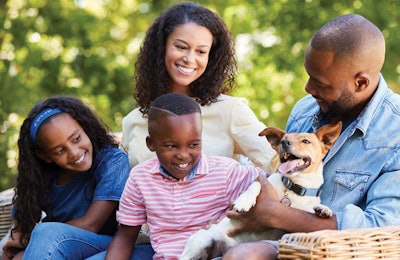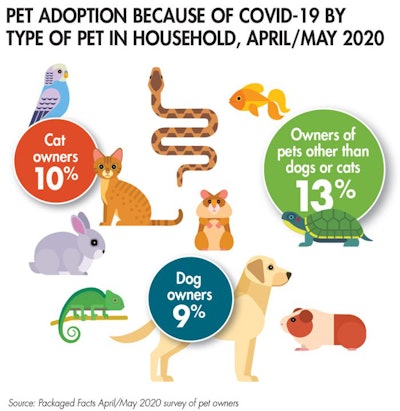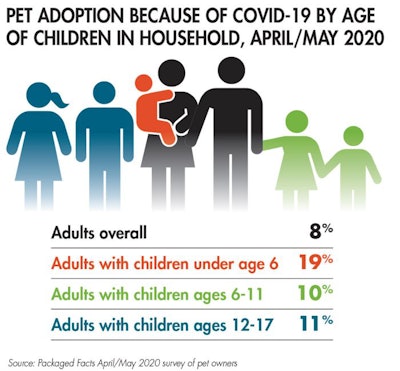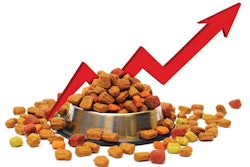
In our annual U.S. Pet Market Outlook, published at the end of March 2020, Packaged Facts noted that “the brightest note for the pet industry during the age of coronavirus is the possibility that pet adoption and ownership will surge during the crisis and its aftermath, and there is historical precedent for pet adoption increasing during times of emotional and economic duress.”
Throughout the Great Recession of 2008, pet ownership rates for dogs and cats — the bedrock for the pet industry — remained solid. Dog ownership rates notched up slightly to 50% of households and then kept advancing, while cat ownership rates maintained their longer-term pattern of hovering in the 25% range.
Pet adoptions a “sign of the times”
At the time of publication, news reports were already indicating that pet adoptions through shelters was a sign of the times. The Washington Post (March 20, 2020), for example, reported that “As schools close and millions of people across the United States work from home, the promise of companionship even in a time of isolation is prompting some to take in animals. Many say they finally have the time to properly train and care for a new pet. Animal rescuers across the country say they are seeing spiking interest in adoption and fostering, as well as offers to help everywhere from open-admission shelters to smaller non-profit groups.”
A Packaged Facts April 28/May 5, 2020 survey of pet owners confirms that this has been the case, if anything even more so than anticipated. Among adults overall, 8% report having adopted a pet specifically because of the COVID-19 pandemic and the resulting stay-at-home period. By type of pet, among current pet owners, 9% of dog owners have adopted a pet specifically because of the pandemic (see Figure 1) compared with 10% of cat owners, and with 13% of those with other types of pets (including fish, birds, small mammals and reptiles).
FIGURE 1: COVID-19 has led to some pet owners adopting animals specifically due to the pandemic and the changes it has caused in their lives.(Nadya_Art I shutterstock.com)
Further breakdowns of the pet adoption surge
This surge in pet adoption ties not only to the current stay-at-home period but more specifically to having kids underfoot at home, given school closures and the disruption of public sports, recreational and entertainment events (and even play dates) where social distancing isn’t possible. Therefore, while 8% of adults overall have adopted a pet because of COVID-19, that rate spikes up to 19% among those with children under age six in the home and rises to 10–11% among those with children ages six–17 at home (see Figure 2).
FIGURE 2: Those with kids in the household have been more likely to adopt a pet due to COVID-19. (danleap I iStock.com)
Pet adoption has been heaviest for “other” types of pets, rather than dogs or cats as the most popular types of pets, because pet adoption also ties in to a multiple-pets in household trend. So there’s no under-appreciation of dogs or cats: among recent pet adopters, 90% have a pet dog, compared with 75% of pet owners overall, and 70% have a cat, compared with 56% of pet owners overall (see Figure 3).

FIGURE 3: Animals other than dogs and cats have been getting plenty of attention and finding new homes due to the pandemic. (Nadya_Art I shutterstock.com)
Given that pet ownership is a discretionary expense, and typically a very significant one, multiple-pet households are also relatively higher-income, adding fuel to the fire for the long-term pet product premiumization trend. Pet owners overall, and especially dog owners, have always had higher-than-average incomes.
There’s been a shift in recent years, however, where the average income of those with pets other than dogs and cats has been pulling away from average income of cat owners and edging up toward the average income of dog owners. That’s because keeping “other” types of pets is often a mark of pet-rich households, rather than of households at the entry level of pet ownership. And these pet adoption and multiple-pet household trends bode very well for supporting the sales level of pet products overall, including but not limited to pet food and treats, in these difficult economic times.


















